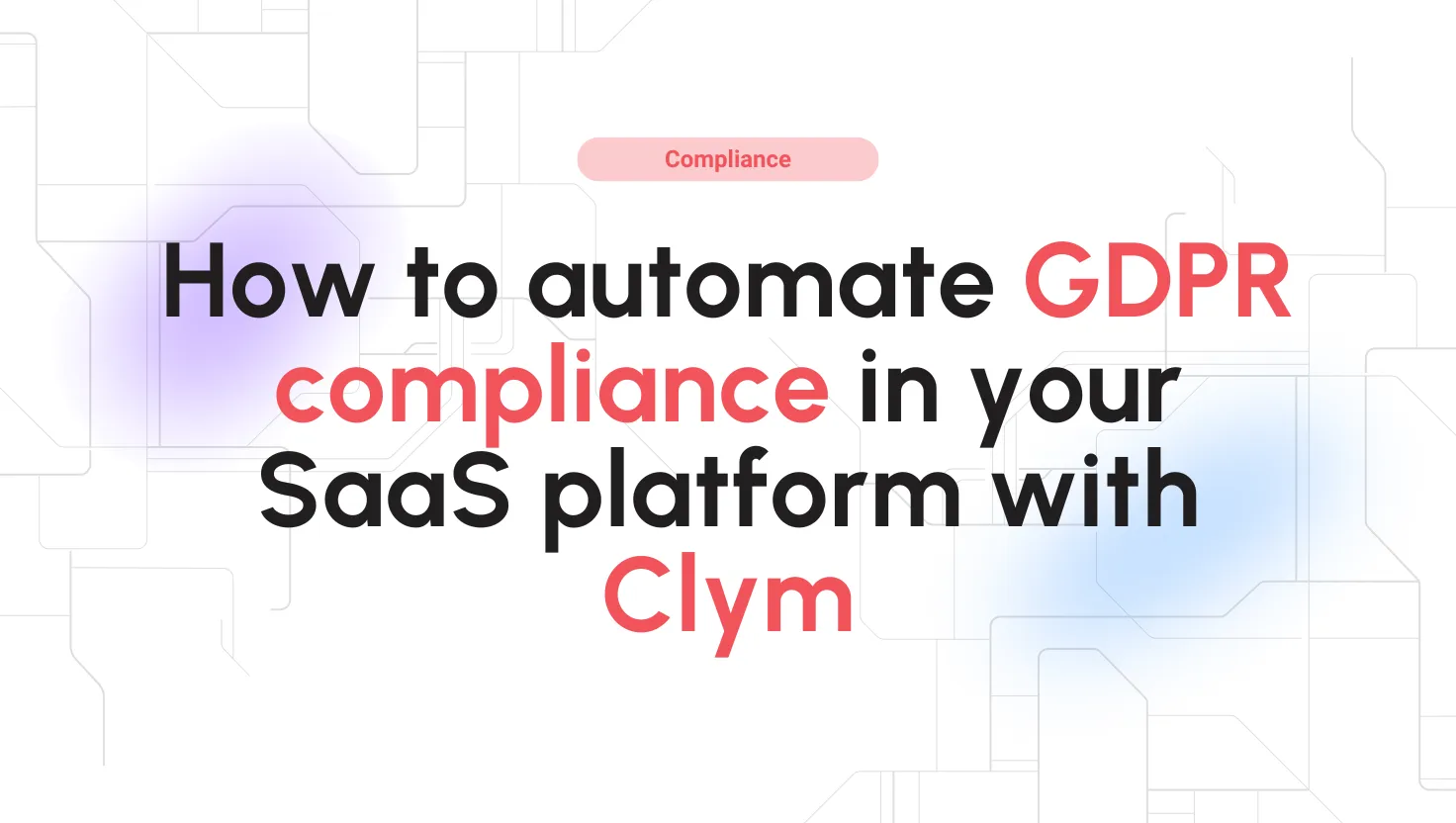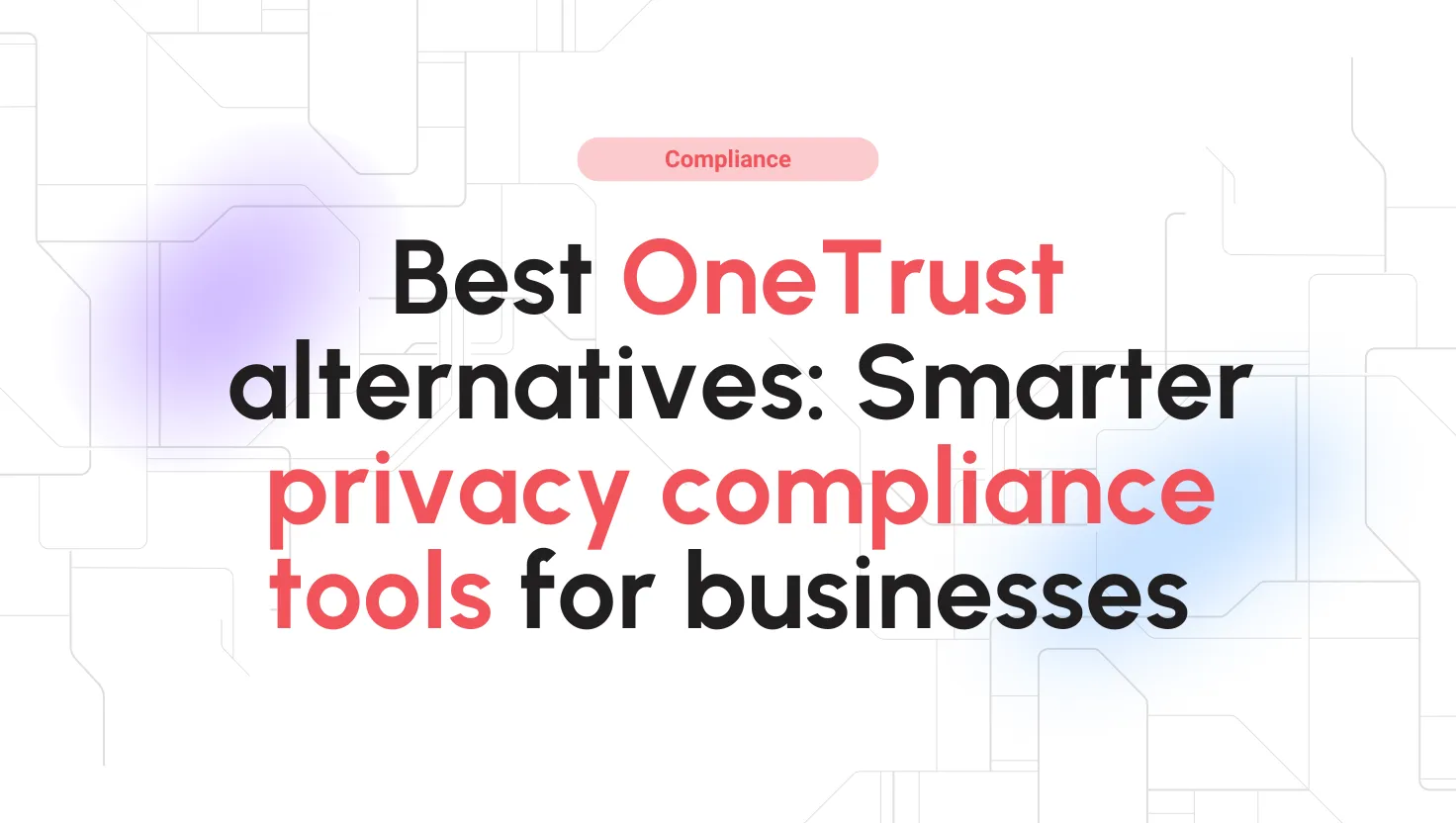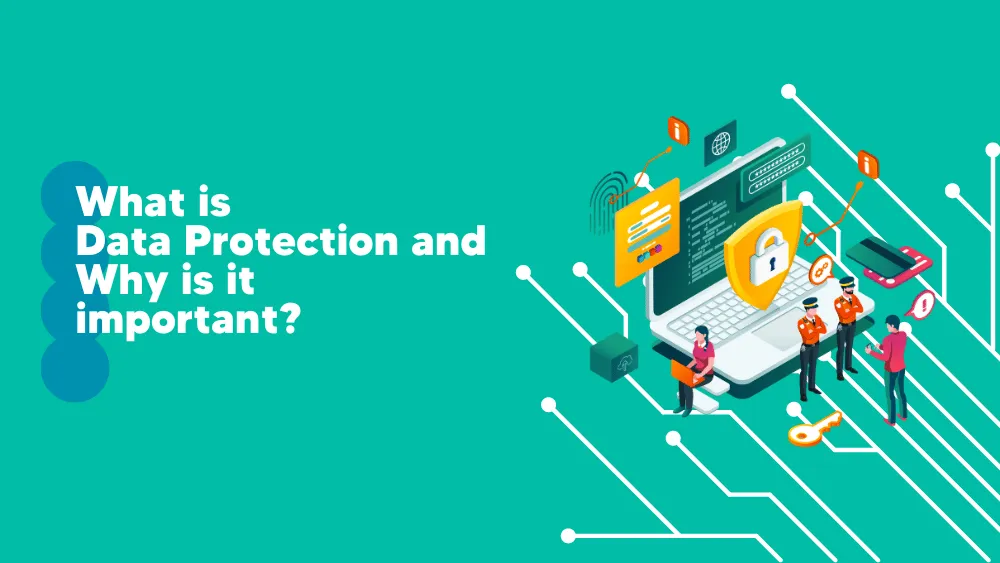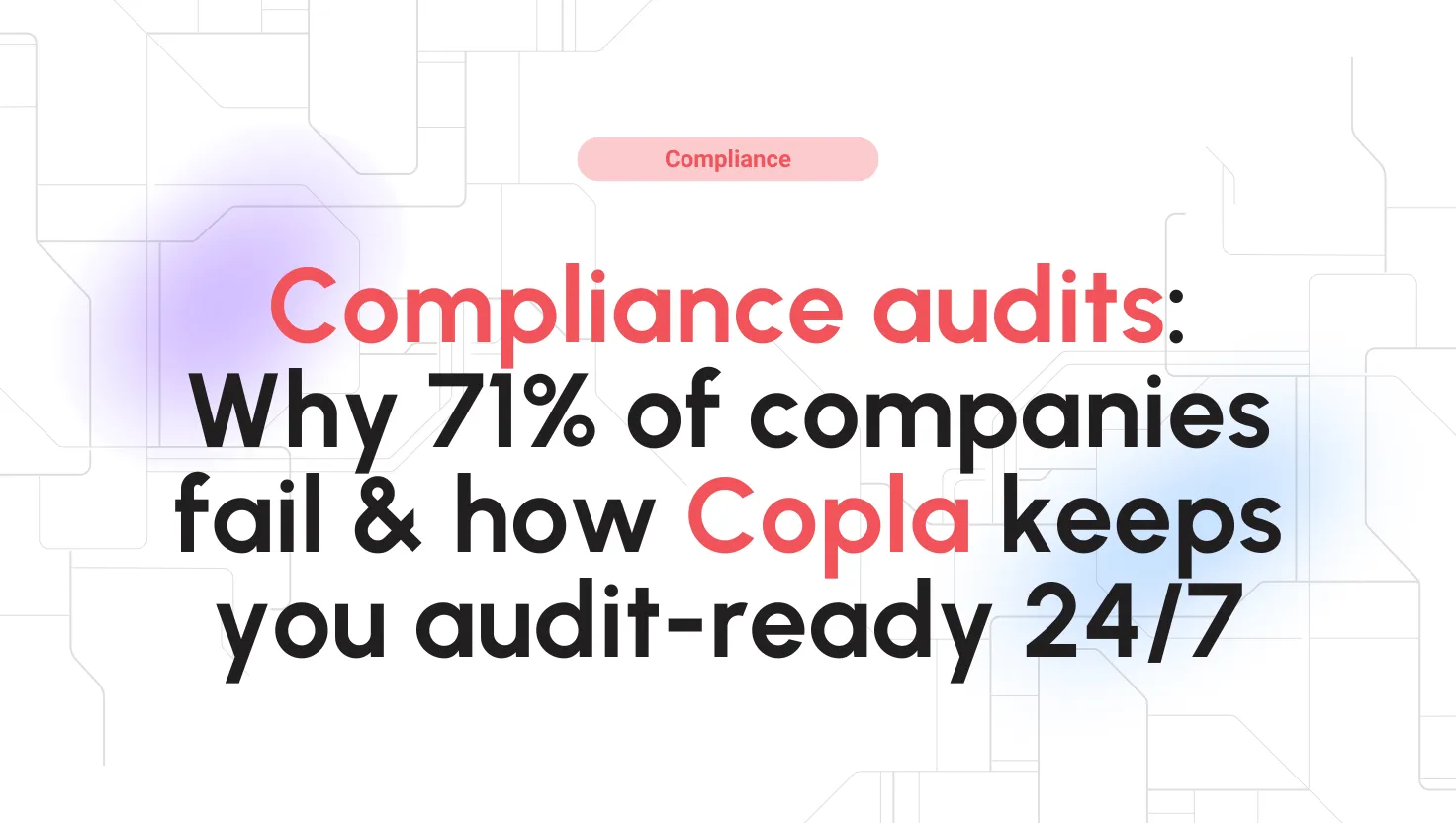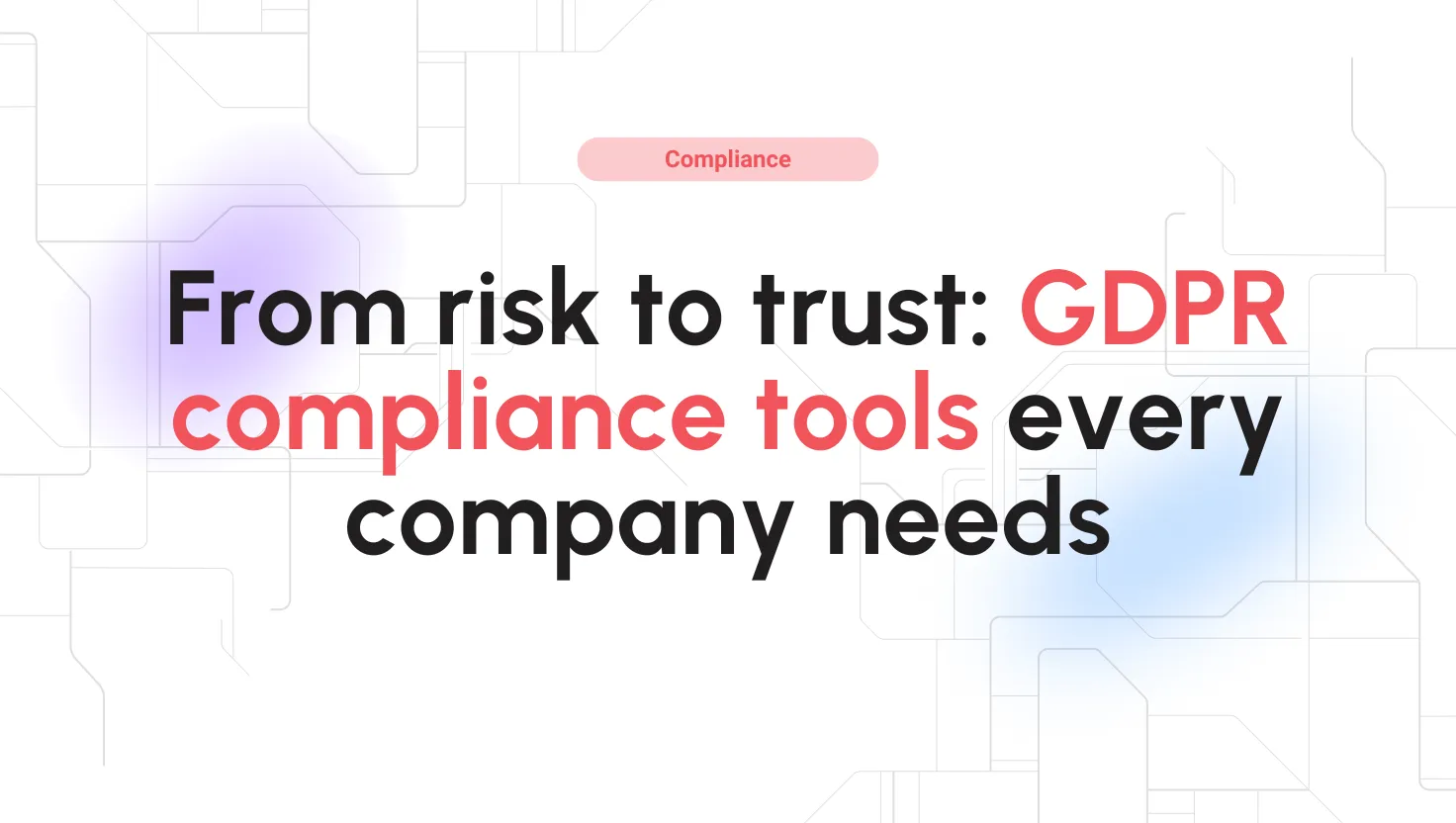- Cloud compliance checklist: A practical step-by-step guide for SaaS CTOs to meet regulations and security standards.
- Major frameworks covered: GDPR, HIPAA, SOC 2, ISO 27001, PCI DSS and others.
- Key actions: Risk assessments, encryption, access controls (MFA/RBAC), monitoring, and documentation.
- Tools: Use automated compliance platforms like Clym to streamline audits, cookie consent, and privacy workflows.
- Expert tips: Avoid manual spreadsheets, update policies quarterly, and treat compliance as an ongoing process.
Serious financial penalties and lost business are at stake with cloud compliance failures. For example, GDPR fines can reach 4% of global turnover (up to €20M), and 82% of data breaches now involve cloud data. Such incidents cost an average of $4.88 million per breach.
For CTOs, cloud compliance is not just a checkbox; it’s essential for customer trust, data security, and sustainable growth. A clear, practical checklist helps balance innovation with responsibility, keeping your SaaS company competitive and secure.
What is a cloud compliance checklist?
A cloud compliance checklist is essentially a roadmap for ensuring your cloud infrastructure, applications, and data meet all required regulatory, security, and privacy standards. It lays out the steps needed to align with relevant frameworks (e.g., GDPR, HIPAA, SOC 2, PCI DSS, ISO 27001) and to implement proper security controls.
Think of it as your insurance policy: by methodically ticking off each requirement, you safeguard customer data and make your business audit-ready.
Important elements often include:- Framework Identification: Determine which regulations apply to your SaaS. For example, GDPR (EU data privacy), HIPAA (health data), SOC 2 (cloud security), PCI DSS (payment data), ISO 27001 (information security), and local laws like CCPA (California privacy).
- Risk Assessment: Perform regular security assessments (e.g., penetration tests, vulnerability scans, and internal audits) to uncover and prioritize areas of exposure.
- Security Controls: Enforce strong cloud security measures – encrypt all sensitive data (in transit and at rest), implement multi-factor authentication (MFA) and role-based access control (RBAC) to restrict user privileges, and set up real-time monitoring and logging of activities.
- Policy Documentation: Maintain clear, written policies and procedures (data handling, incident response, access management) so every team member is on the same page. Well-documented processes make audits smoother.
- Audit Preparedness: Keep detailed audit trails, logs, and evidence of controls. Continuous monitoring and record-keeping mean you’re always ready for internal or external compliance audits.
Consider this checklist your competitive edge – it helps ensure you meet customer demands and regulatory obligations without slowing down development.
Why cloud compliance matters for CTOs
-
Avoid costly penalties
Noncompliance can cripple your business. GDPR violations alone risk fines of up to 4% of annual turnover. Similarly, HIPAA or PCI breaches trigger severe penalties. Beyond fines, data breaches drain resources and reputation – 82% of breaches now involve cloud data, with an average cost of $4.88M per incident. Compliance is an essential form of risk mitigation for CTOs.
-
Build customer trust & Enable growth
Enterprise clients almost always demand proof of security compliance (SOC 2, ISO 27001, etc.) before signing deals. In fact, having SOC 2 or ISO certification is often “the ticket to the game” for B2B SaaS. Demonstrating adherence to top frameworks signals that you are a responsible partner. It not only builds trust but can shorten sales cycles and open doors to regulated markets (finance, healthcare).
Surveys show 73% of business leaders say meeting compliance standards improves public perception of their company.
-
Strengthen your security posture
Compliance frameworks aren’t just checklists – they’re proven methodologies for security. Following standards like NIST CSF or ISO 27001 forces you to identify assets, encrypt data, monitor activity, and plan incident response systematically.
This structured approach inherently strengthens data protection, reducing the chance of breaches and giving CTOs confidence in their cloud defenses.
Benefits of having a compliance checklist
- Audit Readiness: Keep documentation and controls up to date so audits (internal or external) are smooth and without surprises.
- Risk Mitigation: Systematic reviews catch vulnerabilities early. Proactively fixing issues prevents breaches.
- Competitive Advantage: Demonstrating solid compliance (through certifications or audit reports) differentiates you to customers and investors, showing your SaaS is reliable and mature.
- Operational Efficiency: A living checklist aligns teams on security processes, reducing firefighting. Well-defined procedures mean faster response to issues and fewer duplicate efforts.
Challenges CTOs face in cloud compliance
- Evolving Regulations: Compliance rules change rapidly. Keeping track of global privacy laws (GDPR updates, new state laws like California’s CPRA, India’s PDPB, etc.) and security standards requires constant vigilance.
- Complex Vendor Ecosystem: SaaS products often rely on multiple cloud providers and third-party services. Every vendor introduces a shared responsibility – cloud hosts secure infrastructure, but you secure your data and configurations. Misunderstanding this model (a major cause of cloud security failures) is common.
- Balancing Innovation and Compliance: Implementing controls can feel bureaucratic. CTOs must integrate compliance seamlessly (using DevSecOps practices) so security doesn’t bottleneck development. Achieving this balance takes planning and culture change.
- Continuous Oversight: Cloud environments change fast (new features, services, deployments). Maintaining compliance demands ongoing monitoring and periodic reviews, not a “set and forget” approach. It can strain resources without the right tools.
Step-by-Step Compliance Checklist for CTOs
And here we reached the reason why and for what you are here on this article – the list to check for CTOs.
- Identify applicable regulations: List all relevant standards for your SaaS (GDPR, HIPAA, SOC 2, PCI DSS, ISO 27001, etc.) and any industry-specific rules. Clarify which data types and geographies trigger which laws.
- Conduct a risk assessment: Perform regular security scans and penetration tests to pinpoint vulnerabilities in your cloud architecture. Rank risks by impact and likelihood to prioritize fixes.
- Encrypt data everywhere: Ensure all sensitive data is encrypted at rest and in transit. Use managed key services or HSMs for key management. Regularly back up data securely.
- Implement strong access controls: Implement MFA for all accounts. Use identity and access management (IAM) policies and RBAC so users see only what they need. Regularly audit user permissions.
- Continuous monitoring: Deploy tools (CSPM, SIEM) to monitor your cloud environment 24/7. Set up alerts for suspicious activity (unusual logins, configuration changes, etc.) to catch issues early.
- Document policies & Processes: Keep a secure, centralized repository of your policies (security, privacy, incident response). Maintain logs of all changes and user activities (access logs, audit trails) – these are crucial for compliance evidence.
- Train your team: Educate developers, ops, and staff on security best practices and compliance requirements. Regular training ensures everyone understands why these controls exist and how to follow them.
- Manage Third-Party Compliance: Verify that your cloud providers (AWS, Azure, Google Cloud) and any subcontractors have the necessary certifications (e.g. ISO 27001, SOC 2) and configure them securely. Review their audit reports or attestations.
- Review and update regularly: Compliance is ongoing. Schedule quarterly reviews (or more frequently if regulations change) to update your checklist, patch systems, and revise policies as needed.
Clym’s automation to support compliance
For CTOs, the reality is that manual compliance management simply doesn’t scale. Regulations change quickly, audits demand detailed evidence, and customers expect transparency.
This is where cloud compliance tools step in. They automate repetitive tasks, centralize documentation, and provide real-time monitoring, freeing technical leaders to focus on strategy and growth instead of chasing paperwork.
Why Clym?
Among the available solutions, Clym stands out as a complex platform designed specifically for data privacy and compliance automation.
Unlike generic tools that only cover one framework, Clym is built to facilitate businesses’ compliance with 150+ global regulations, including GDPR compliance, CCPA, LGPD, and more.
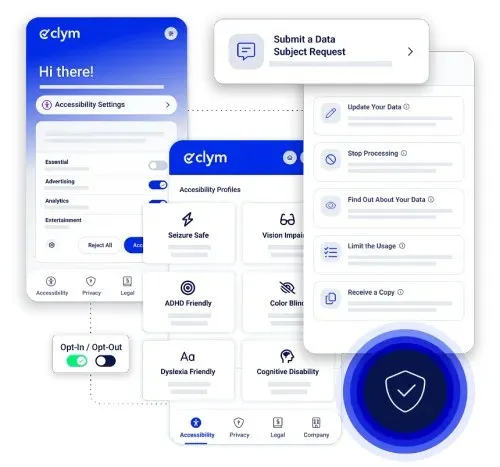
For SaaS CTOs navigating multi-jurisdictional requirements, this breadth means you don’t need a patchwork of separate tools.
Core features of Clym:
- Automated Consent Management: Clym makes it simple to deploy cookie consent banners and preference centers that adapt to local regulations. Whether a user is in Germany or California, they see the legally correct version. Consent logs are stored automatically for audit-readiness.
- Data Subject Request (DSR) Handling: GDPR and CCPA give users the right to access, modify, or delete their data. Clym automates these requests, from intake through verification to resolution, while keeping a detailed record. That’s one less spreadsheet for your team to manage.
- Policy Updates at Scale: Privacy policies, cookie notices, and terms of service can be updated centrally and published instantly across your websites or applications. This ensures that as regulations evolve, your public-facing documents are always current.
- Accessibility & Transparency: Beyond compliance, Clym provides features like an accessibility widget, which increases/improves your website’s usability by people with disabilities, an often-overlooked requirement that’s increasingly tied to compliance.
- Audit & Reporting Dashboard: Everything Clym manages is logged and accessible in a centralized dashboard. During audits, CTOs can quickly generate compliance reports without digging through disparate systems.
Save 15-40% on Clym’s pricing with expert negociation!
Distinct advantage of Clym for CTOs
What makes Clym particularly compelling for SaaS leaders is its ease of deployment and scalability. It can be rolled out in as little as 30 minutes and is designed to support businesses handling anything from a few thousand to billions of pageviews without impacting performance.
Instead of viewing compliance as a cost center, CTOs using Clym often highlight how it streamlines sales conversations: by demonstrating GDPR/CCPA readiness with Clym’s reports and consent systems, SaaS startups can reassure enterprise buyers faster and close deals sooner.
Tips & common mistakes
Mistakes to avoid:- Spreadsheet Overload: Relying on manual lists or Excel for compliance tracking is error-prone. It’s easy to miss updates or lose audit data.
- Ignoring Third-Party Risk: Don’t assume your providers handle everything. Verify every vendor’s certifications and clarify which security controls they cover.
- One-Time Mindset: Treating compliance like a one-off project is risky. Regulations change and new threats emerge constantly.
- Skipping Training: If your team isn’t educated on policies, critical steps (like secure coding or data handling) can fall through the cracks.
Compliance isn’t a checkbox; it’s an ongoing commitment. Proactively following these tips turns compliance from a burden into a strength.
Good to know!
Future trends in cloud compliance
Looking ahead, the future is bright and full of automation. Even in cloud compliance.
- AI-Driven Compliance: Machine learning and AI will increasingly automate compliance reporting and threat detection. Expect more CSPM (Cloud Security Posture Management) and CNAPP tools with built-in anomaly detection and auto-remediation.
- Expanding Privacy Laws: New data protection regulations are on the horizon worldwide (e.g. stricter data residency rules, AI ethics frameworks). CTOs must stay informed about laws like the EU’s AI Act and upcoming US privacy bills to ensure compliance keeps pace.
- Zero Trust & DevSecOps: The Zero Trust security model (continuous verification) will become standard practice. Compliance will shift-left into development: infrastructure-as-code and automated compliance-as-code will bake rules (like encryption and network policies) into deployment pipelines.
Staying agile and investing in automation will help CTOs adapt to these shifts quickly.
Final verdict
In the cloud era, compliance is a foundation for resilience and growth. By following a thorough cloud compliance checklist, CTOs protect their customers and company from costly fines and breaches.
More than just avoiding penalties, compliance builds credibility – it gives enterprise buyers confidence and lets you scale faster.
Embrace compliance as a strategic enabler: secure your cloud with best practices (encryption, IAM, monitoring) and automation, and use the time you save to innovate.
If keeping up with evolving rules feels overwhelming, remember that tools like Clym exist to help. They can automate cookie consent, privacy workflows, and audit logs so your team stays audit-ready. In short, make compliance part of your company’s DNA.
That way, you’ll spend less time firefighting and more time building great SaaS products.



